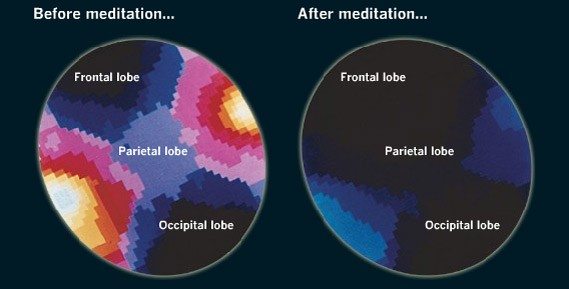Here is also
Words will never suffice to express consciousness as the greatest mystery of our existence and neither will examining the brain as the control centre of all emotions and actions fully grasp the entirety of what actually happens to us in wake of spiritual experiences. We do know however, that these practices not only tell us something about the nature of reality and how we perceive it but also have useful applications for improving mental and physical health.
Over the past few decades there has been heightened interest in academia and research on what happens to the control centre of our physical presence – our brain, during meditation. The early studies focused more on studying people’s brains during meditation because it is relatively easy spiritual practice to monitor and this is what they found happening in different parts of the brain.
Frontal Lobes : Self-Awareness & Consciousness Centre
The most highly evolved part of the brain, called the frontal lobes which not only controls the reasoning and emotions but it is also associated with self-conscious awareness. Medial prefrontal cortex is the ‘Me Center’ of our brain responsible for processing information relating to ourselves and our experiences. When we meditate, the neural connections sending signals from body sensations and fear centers to the prefrontal cortex are weakened. While on the other hand meditative practices like prayer, breath count or a mantra chanting, bringing back attention repeatedly, activates the area modulating attention and reasoning. What happens then is that we react less strongly to fear or unpleasant feelings as we become more capable to look at them rationally.
In a research on lifestyle and stress as possible factors contributing to Alzheimer’s disease, 12 minute meditation was found to have positive effects on cognition and well-being for reduction of neurodegeneration.
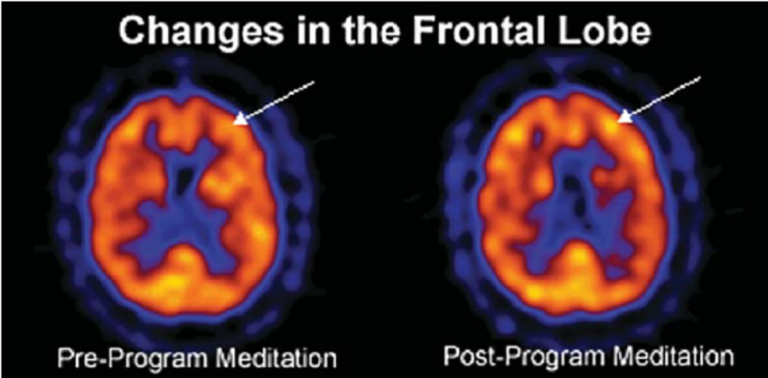
Posterior Cingulate: Wandering Thoughts Centre
Posterior Cingulate is part of the brain associated with wandering thoughts and self-relevance. Meditation increases the density of this part of the brain and so we remain more in the present moment without wandering thoughts or anticipation. This results in developing a more realistic sense of self and reality.
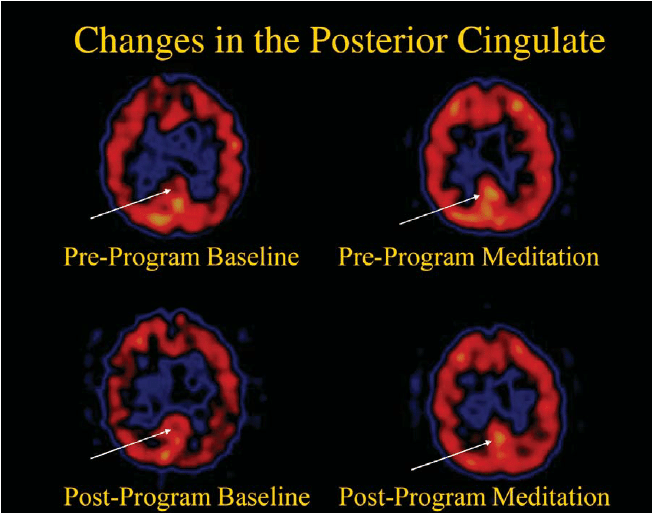
Parietal Lobes: Spatial Awareness Centre
Numerous studies in which brains of nuns and Buddhists were scanned during meditation, showed a reduced activity in the area of the brain responsible for perceiving 3D objects in space (parietal lobes). This produces a sense of timelessness and spacelessness, an experience of oneness with all living things or unity because the reduced activity blurs the perceived lines between the meditator and other objects.Numerous studies in which brains of nuns and Buddhists were scanned during meditation, showed a reduced activity in the area of the brain responsible for perceiving 3D objects in space (parietal lobes). This produces a sense of timelessness and spacelessness, an experience of oneness with all living things or unity because the reduced activity blurs the perceived lines between the meditator and other objects.
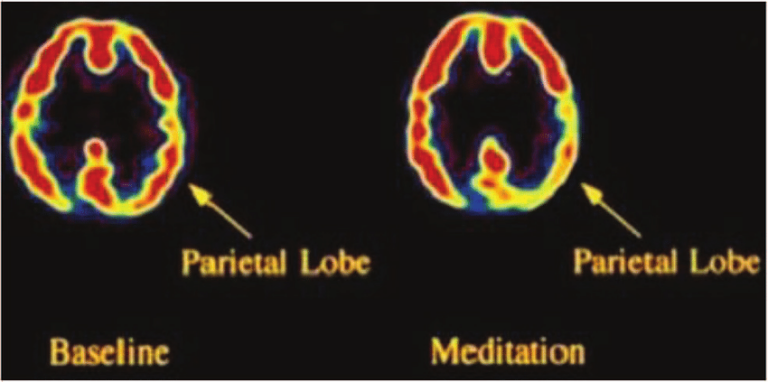
Thalamus: Emotional & Sensory Centre
The thalamus focuses attention by funneling some sensory data deeper into the brain and stopping other signals in their tracks. Reduced activity is observed in thalamus during meditation which has also shown larger decreases in pain unpleasantness ratings because it decreases the flow of incoming information to a trickle.

Left Hippocampus: The Learning Center
This is the area of the brain that controls our cognitive ability and memory and thus helps us learn. Regular meditation increases the cortical thickness of the hippocampus and density of grey-matter density which enhances our cognitive functioning and positive emotions for longer-lasting emotional stability, and heightened focus. When spiritual practitioners surrender their will, such as when they speak in tongues or function as a medium, activity decreases in their frontal lobes and increases in their thalamus. This suggests that their speech is being generated from part of the brain other than the normal speech centers.
Temporo Parietal Junction (TPJ): The Compassion Centre
TPJ is associated with empathy and compassion which becomes more active when we put ourselves in someone else’s shoes. Thus, stronger TPJ can help us be the good people we aspire to become.
Amygdala: The Fight or Flight Centre
When you feel threatened or afraid, the amygdala sends out signals to release stress hormones that prepare your body to fight or run away. But with meditation and mindfulness based stress reduction practices, it is possible to reduce the size of amygdala. Meditators have smaller amygdala because they have more control of their stress and anxiety.
In a research by Harvard University, Functional MRI (left) shows activation in the amygdala when participants were watching images with emotional content before learning meditation. After eight weeks of training in mindful attention meditation (right), the amygdala is less activated after the meditation training.
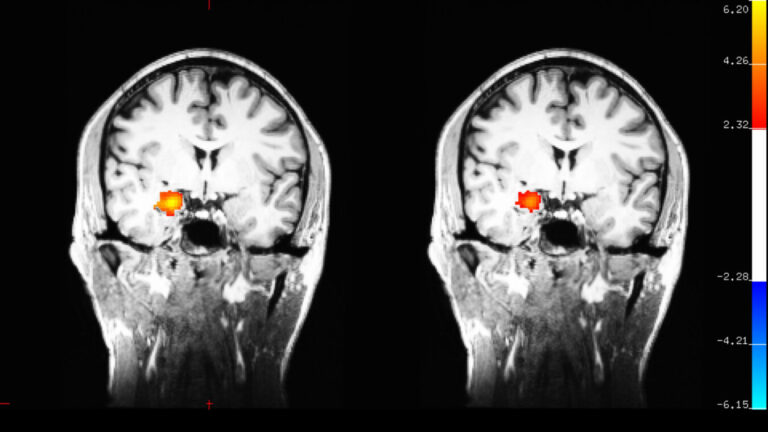
Brain Waves of Awakened State
Electrical activity emanating from the brain is displayed in the form of brainwaves. There are four categories of these brainwaves and one of them is beta-waves. Another phenomena observed during meditation is the decrease in the beta waves which are the brain waves involved in conscious thought and logical thinking during awakened state.
In the image below you can see how the beta waves (shown in bright colors on the left) are dramatically reduced during meditation (on the right).
